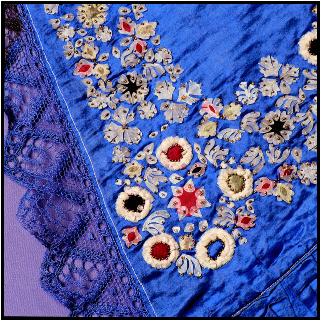(Singular nouns: Fr-poisson écaille; Ger-Fischschuppe; Nor-fiskeskjell; Rus-рыбья чешуя)
A. Gyotaku. American shad (Alosa sapidissima (Wilson, 1811)),
caught in the Thames River, Connecticut, several miles upstream from
Long Island Sound, was 54 cm long. Gyotaku was made by
Jack A. Brown of Noank,
Connecticut. (© photo by
Jack Brown, from www.kechenenyfishprints.com)
DESCRIPTION: Scales of
bony fish (phylum, Chordata; subphylum, Vertebrata; class,
Osteichthyes; subclass, Actinopterygii) -- e.g., yellow perch (Perca flavescens (Mitchill 1814))
-- have two
chief parts (layers), the surficial "bony" layer that is chiefly
hydroxyapatite and calcium carbonate and the underlying fibroidal layer
that is chiefly organic proteins such as collagen (Helfman, Collette
& Facey, 1997). A few additional characteristics
are described briefly under the Remarks subheading. Typical
properties follow:
